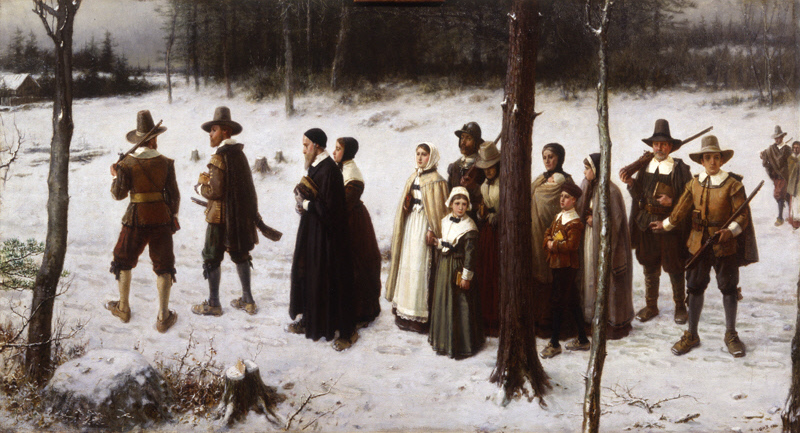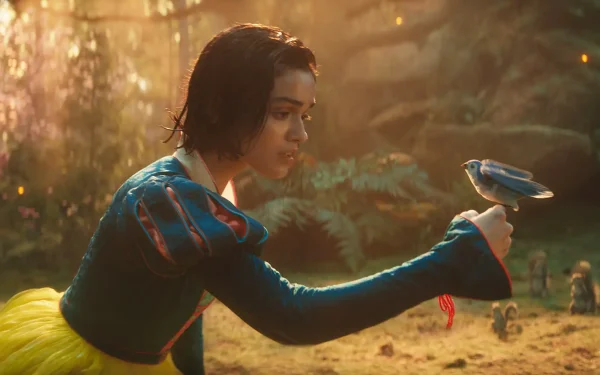The Tale of Thanksgiving
Courtesy of George Henry Boughton.
The very first Pilgrims.
A beloved American tradition, Thanksgiving has long symbolized a day of gratitude often accompanied by a traditional turkey feast. Children set the table, parents rush to get cooking, relatives and friends ring doorbells. For years, Americans have celebrated Thanksgiving, but how exactly did it originate? Did the colonists invent it? What were its effects on Native Americans? And how exactly has Thanksgiving evolved since the 1600s? Thanksgiving may be a comforting time of joy, but what’s the whole story?
Thanksgiving originates from the early-seventeenth century, when the pilgrims of Plymouth Rock Colony took on their very first harvest in the New World. This territory included new acquisition for America as a result of international voyages. Here, the colonists were able to use abundant and plentiful soil to cultivate crops of their own; however, it was at the expense of many Native Americans’ homes and livelihoods. The feast has been described to include deer and other wild animals, a variety of fish, and Native American corn, which was eaten in desserts and savory dishes. An array of fruits and vegetables was displayed in creations of woodwork called cornucopias that were conically-shaped. Harvesting was not an easy task for both the Native Americans and the colonists, which is why hunting and fishing was celebrated with an elaborate meal. What the pilgrims weren’t aware of was the legacy they were pioneering in sitting down to prepare their supper in reverence of their first harvest.
Unlike modern Thanksgivings, the colonists decided to spread their dinner over the span of three days, leading to a grander celebration on the final day, with almost 150 attendees—both the Wampanoag and pilgrim citizens. According to History, there isn’t concrete evidence proving that turkey was at the first celebration. Historians claim that 1863 was the bird’s introduction to the celebration, when William Braford noticed just how much of the American hunting industry was composed of turkey. Soon thereafter, it became the centerpiece of the dinner, and Thanksgiving was officially declared a national holiday by President Roosevelt in 1941.
The Thanksgiving table has gained many additions over the years. Now, Americans prepare an assortment of side dishes in conjunction with a turkey—mashed potatoes, green peas, gravy, cranberry sauce, candied yams, and much more. Even desserts such as pumpkin pie, cornbread, applesauce, and crumbles have risen in popularity. The dinner can be far too meticulous, as some preparations can take up to twelve hours! In contemporary cuisine, especially due to a rise in selective diets being vegetarian or lactose-compromised, many producers have begun to accommodate requests in marketing vegan turkeys and meat. Stuffing can be replaced with a hearty tofu mixture, and squash, salads, and fruits are common as well. While modern Thanksgiving celebrations may not exactly resemble those of the past, a blessing the tradition has gifted America with is the diversity of citizens celebrating it. Many cultures, regardless of their ethnic backgrounds, seem to revere Thanksgiving for its intent and being a time of togetherness. Flights are typically at an all-time high in late November, as families reunite across the country and world to give thanks for all they have and are grateful for.
An undeniable aspect of the holiday is its roots of Native American torment. The colonists were able to celebrate largely due to sacrifices tribes had to make, forced dissent from their homes, and coerced labor. According to the Smithsonian Magazine, “The Thanksgiving myth doesn’t address the deterioration of this relationship culminating in one of the most horrific colonial Indian wars on record, King Philip’s War, and also doesn’t address Wampanoag survival and adaptation over the centuries.” As a result, in recent years, Native American Appreciation Day has been celebrated, succeeding Thanksgiving to honor the diverse roots America has and the rocky history our nation has established thus far. So while you may celebrate Thanksgiving, look at it as more than a day of gratitude for one another.






